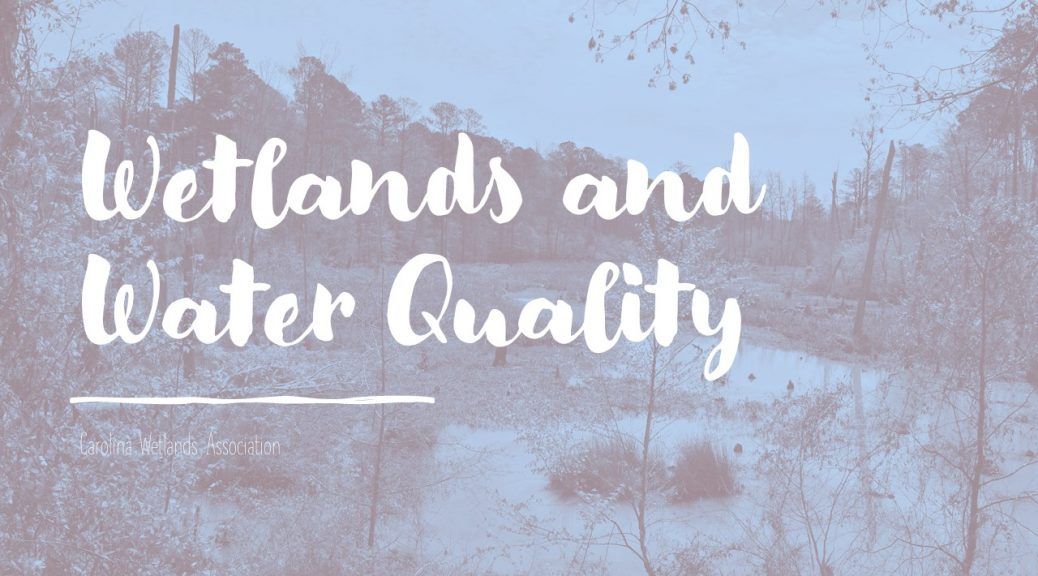
Wetlands and Water Quality
Abstract
One of the most important functions of wetlands is the ability to purify water and preserve water quality. Despite the integral role of wetlands in maintaining healthy ecosystems, they continue to be at risk of impacts by development, lack of legal protections, pollution, and the negative influences of climate change. Wetlands provide numerous ecosystem services; one of which being their ability to improve water quality and help in maintaining water quantity. These critical services are only expected to become more important as freshwater becomes an increasingly limited resource. It is therefore imperative that efforts are taken to preserve and restore our nation’s wetlands in order to retain our natural healthy waterways.
Problem Statement: Threats to Wetland Water Quality Function
The capacity of wetlands to maintain and improve water quality is dependent upon the protection and restoration of healthy, functioning wetlands. Historically, wetlands were largely considered wastelands, responsible for pests and diseases. Many wetlands were drained to encourage settlement and make way for agriculture and silviculture. Today, extensive land development and a high percentage of impervious surfaces have significantly impacted wetlands’ natural water flows, nutrient balance, and biodiversity (US EPA, 2020). Extreme events including droughts, hurricanes, and catastrophic wildfires threaten the health of wetlands. The many benefits maintained by riparian and coastal wetlands make their protection imperative, yet the historical degradation and current and projected threats to these habitats put them at risk.
Background: Wetland Water Quality Function
Wetlands that have landscape positions directly adjacent to rivers and streams or coastlines are very important for protecting water quality. Riparian wetlands like headwater forests, riverine swamps, or bottomland hardwoods forests, are extremely important for protecting the water quality of watershed stream systems.
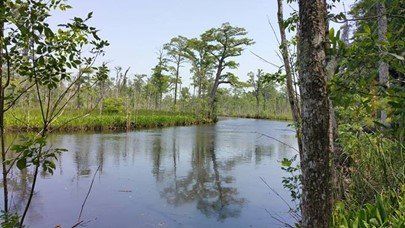
Riverine Wetlands along the Lockwood Folly River, Brunswick County
Headwater forests are connected to small first order streams, the small streams located in the upper reaches of watersheds, and thus have a strong impact on the health of streams and rivers lower in the watershed. Riverine swamps and bottomland forests buffer larger creeks and rivers lower in the watershed. These wetlands serve to attenuate and filter sediment and nutrient runoff and provide both water quality and biodiversity services (Rashleigh and Keith, 2010). Water draining from rural or urban uplands must pass through riparian zones to reach a stream (Evans et al. 1996). During the journey, chemical, physical, and biological processes occur, improving the quality of the water before it reaches the stream (Evans et al. 1996).
Figure 1 illustrates how healthy wetlands function across the landscape. Chemicals and nutrients found in runoff are trapped and processed by sediment and vegetation in the wetlands. Nitrogen, phosphorous, and heavy metals found in both urban and agriculture nonpoint source pollution are captured, processed, and stored in wetland soils and plant growth in healthy functioning wetlands. Riparian wetlands also remove harmful bacteria, suspended materials, and pathogens from water prior to that water entering the stream environment (Klapproth and Johnson, 2009). In addition, a healthy network of wetlands is capable of decreasing flooding downstream as the wetlands retain significant amounts of water. Biodiversity, water clarity and public health are all benefitted through healthy riparian wetlands.
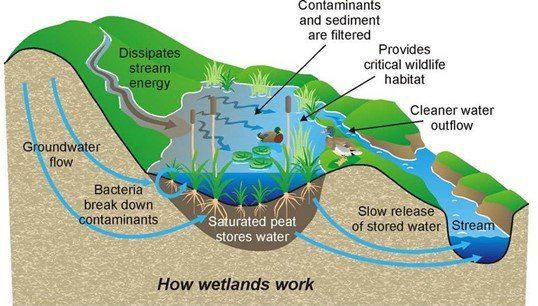
Figure 1. Wetlands improve water quality, soil water, and provide critical wildlife habitat across a landscape (provided curtesy of researchgate.net).
Coastal wetlands provide numerous ecosystem services, including water filtration, flood control and coastal protection. Coastal wetlands contribute to healthy oceans and productive coastal regions. These services have quantifiable direct and indirect impacts to water quality. Tidal marshes, estuaries and mangroves recharge groundwater supplies, filter sediment, remove contaminants, and also serve as nurseries and critical feeding and resting grounds for migratory species (Millennium Ecosystem Assessment, 2005).
Wetlands are also extremely important to mitigate the affects of hurricanes and severe flooding by protecting coastlines and absorbing floodwaters along rivers. During storm events, wetlands slow down soil erosion by reducing the speed of water that passes through them (NC DWR, 2018).
Solution: Wetland Protection and Restoration
The best way to protect and improve the valuable water quality functions wetlands provide for watersheds in the Carolinas is to find opportunities for wetland restoration and preservation. Prioritizing wetland protection or restoration of riparian or coastal wetlands will help protect waterways from urban and rural stormwater runoff. Other ways of increasing wetland water quality function also include improving federal, state, and local legal protections for wetlands.
Conclusion
Wetlands play a critical role in protecting and enhancing water quality. Wetlands simply defined are areas of our landscape that are inundated by water either seasonably or permanently. Due to the unique intersection of land and water, wetlands serve an array of environmental services including water filtration, storage, and purification. The valuable ecosystem functions provided by wetlands such as sediment and nutrient retention and flood control directly and indirectly impact water quality. Riparian and coastal wetlands are extremely important in protecting and enhancing water quality as they often are a final barrier between a pollutant source and a water body. Wetlands provide the opportunity for water to be filtered by soil, microbes and wetland plants to remove pollutants naturally.
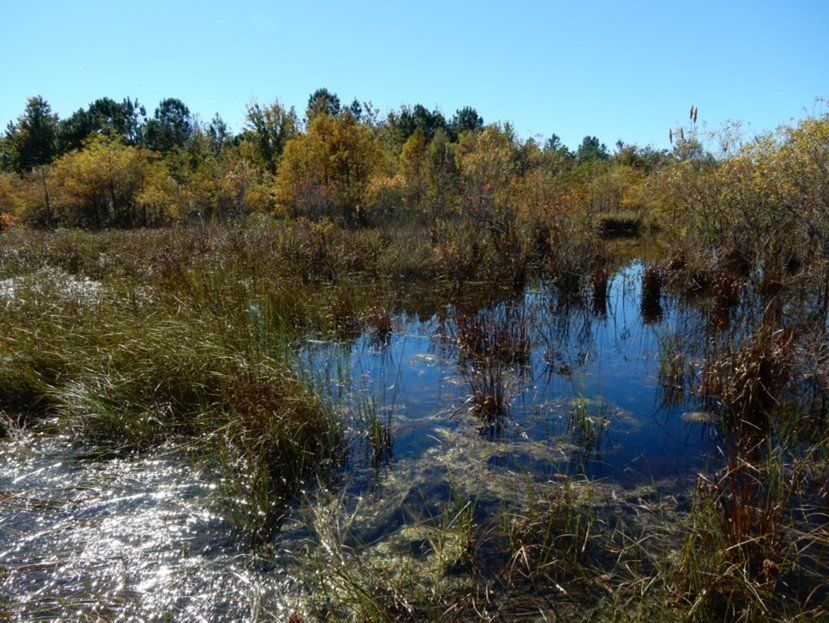
Restored Carolina Bay, Craven County
A myriad of important ecosystem services provided by wetlands, including water quality protection and improvement, are put at risk as development and pollution continue to encroach on our valuable wetlands. Clean and safe water is imperative to the overall health of both our ecosystems and our communities Water quality and quantity, human health, and biodiversity all depend on preserving and restoring healthy and functioning wetlands.
References
Evans, R., J.W. Gilliam, J. P. Lilly. 1996. Wetlands and Water Quality. North Carolina Cooperation Extension Service.
Millennium Ecosystem Assessment (2005) Ecosystems and Human Well Being: Synthesis. Island Press, Washington DC.
Klapproth, J. C, J. E Johnson. 2009. Virginia Cooperative Extension. Understanding the Science Behind Riparian Forest Buffers: Effects on Water Quality.
North Carolina Division of Water Resources. 2018. NC Wetlands. Retrieved from http://www.ncwetlands.org/
Rashleigh, B., and D. Keith. 2010. Ecosystem Services Research Program (ESRP) Albemarle-90 Pamlico Watershed and Estuary Study (APWES) Research Plan. Office of Research and Development, National Exposure Research Laboratory, Ecosystems Research Division, Athens, GA 30605.
United States Environmental Protection Agency (USEPA). 2020. Growth and Water Resources.
https://cfpub.epa.gov/watertrain/moduleFrame.cfm?parent_object_id=241
Wetlands and Water Quality
Abstract
One of the most important functions of wetlands is the ability to purify water and preserve water quality. Despite the integral role of wetlands in maintaining healthy ecosystems, they continue to be at risk of impacts by development, lack of legal protections, pollution, and the negative influences of climate change. Wetlands provide numerous ecosystem services; one of which being their ability to improve water quality and help in maintaining water quantity. These critical services are only expected to become more important as freshwater becomes an increasingly limited resource. It is therefore imperative that efforts are taken to preserve and restore our nation’s wetlands in order to retain our natural healthy waterways.
Problem Statement: Threats to Wetland Water Quality Function
The capacity of wetlands to maintain and improve water quality is dependent upon the protection and restoration of healthy, functioning wetlands. Historically, wetlands were largely considered wastelands, responsible for pests and diseases. Many wetlands were drained to encourage settlement and make way for agriculture and silviculture. Today, extensive land development and a high percentage of impervious surfaces have significantly impacted wetlands’ natural water flows, nutrient balance, and biodiversity (US EPA, 2020). Extreme events including droughts, hurricanes, and catastrophic wildfires threaten the health of wetlands. The many benefits maintained by riparian and coastal wetlands make their protection imperative, yet the historical degradation and current and projected threats to these habitats put them at risk.
Background: Wetland Water Quality Function
Wetlands that have landscape positions directly adjacent to rivers and streams or coastlines are very important for protecting water quality. Riparian wetlands like headwater forests, riverine swamps, or bottomland hardwoods forests, are extremely important for protecting the water quality of watershed stream systems.

Riverine Wetlands along the Lockwood Folly River, Brunswick County
Headwater forests are connected to small first order streams, the small streams located in the upper reaches of watersheds, and thus have a strong impact on the health of streams and rivers lower in the watershed. Riverine swamps and bottomland forests buffer larger creeks and rivers lower in the watershed. These wetlands serve to attenuate and filter sediment and nutrient runoff and provide both water quality and biodiversity services (Rashleigh and Keith, 2010). Water draining from rural or urban uplands must pass through riparian zones to reach a stream (Evans et al. 1996). During the journey, chemical, physical, and biological processes occur, improving the quality of the water before it reaches the stream (Evans et al. 1996).
Figure 1 illustrates how healthy wetlands function across the landscape. Chemicals and nutrients found in runoff are trapped and processed by sediment and vegetation in the wetlands. Nitrogen, phosphorous, and heavy metals found in both urban and agriculture nonpoint source pollution are captured, processed, and stored in wetland soils and plant growth in healthy functioning wetlands. Riparian wetlands also remove harmful bacteria, suspended materials, and pathogens from water prior to that water entering the stream environment (Klapproth and Johnson, 2009). In addition, a healthy network of wetlands is capable of decreasing flooding downstream as the wetlands retain significant amounts of water. Biodiversity, water clarity and public health are all benefitted through healthy riparian wetlands.

Figure 1. Wetlands improve water quality, soil water, and provide critical wildlife habitat across a landscape (provided curtesy of researchgate.net).
Coastal wetlands provide numerous ecosystem services, including water filtration, flood control and coastal protection. Coastal wetlands contribute to healthy oceans and productive coastal regions. These services have quantifiable direct and indirect impacts to water quality. Tidal marshes, estuaries and mangroves recharge groundwater supplies, filter sediment, remove contaminants, and also serve as nurseries and critical feeding and resting grounds for migratory species (Millennium Ecosystem Assessment, 2005).
Wetlands are also extremely important to mitigate the affects of hurricanes and severe flooding by protecting coastlines and absorbing floodwaters along rivers. During storm events, wetlands slow down soil erosion by reducing the speed of water that passes through them (NC DWR, 2018).
Solution: Wetland Protection and Restoration
The best way to protect and improve the valuable water quality functions wetlands provide for watersheds in the Carolinas is to find opportunities for wetland restoration and preservation. Prioritizing wetland protection or restoration of riparian or coastal wetlands will help protect waterways from urban and rural stormwater runoff. Other ways of increasing wetland water quality function also include improving federal, state, and local legal protections for wetlands.
Conclusion
Wetlands play a critical role in protecting and enhancing water quality. Wetlands simply defined are areas of our landscape that are inundated by water either seasonably or permanently. Due to the unique intersection of land and water, wetlands serve an array of environmental services including water filtration, storage, and purification. The valuable ecosystem functions provided by wetlands such as sediment and nutrient retention and flood control directly and indirectly impact water quality. Riparian and coastal wetlands are extremely important in protecting and enhancing water quality as they often are a final barrier between a pollutant source and a water body. Wetlands provide the opportunity for water to be filtered by soil, microbes and wetland plants to remove pollutants naturally.

Restored Carolina Bay, Craven County
myriad of important ecosystem services provided by wetlands, including water quality protection and improvement, are put at risk as development and pollution continue to encroach on our valuable wetlands. Clean and safe water is imperative to the overall health of both our ecosystems and our communities Water quality and quantity, human health, and biodiversity all depend on preserving and restoring healthy and functioning wetlands.
References
Evans, R., J.W. Gilliam, J. P. Lilly. 1996. Wetlands and Water Quality. North Carolina Cooperation Extension Service.
Millennium Ecosystem Assessment (2005) Ecosystems and Human Well Being: Synthesis. Island Press, Washington DC.
Klapproth, J. C, J. E Johnson. 2009. Virginia Cooperative Extension. Understanding the Science Behind Riparian Forest Buffers: Effects on Water Quality.
North Carolina Division of Water Resources. 2018. NC Wetlands. Retrieved from http://www.ncwetlands.org/
Rashleigh, B., and D. Keith. 2010. Ecosystem Services Research Program (ESRP) Albemarle-90 Pamlico Watershed and Estuary Study (APWES) Research Plan. Office of Research and Development, National Exposure Research Laboratory, Ecosystems Research Division, Athens, GA 30605.
United States Environmental Protection Agency (USEPA). 2020. Growth and Water Resources.
https://cfpub.epa.gov/watertrain/moduleFrame.cfm?parent_object_id=241
